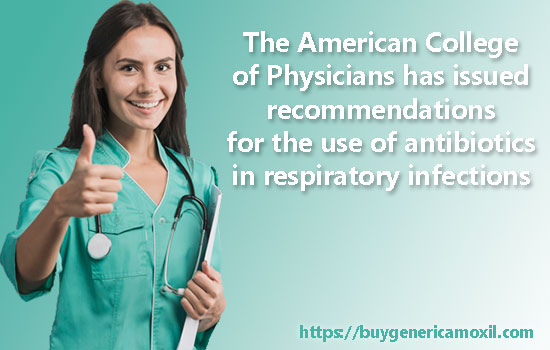The American College of Physicians has issued guidelines for the recommendations for the use of antibiotic for common infections. The guidelines were published in the journal Annals of Internal Medicine.
Often, doctors prescribe longer courses of antibiotic therapy to prevent the development of antibiotic resistance. However, experts noted that the excessive use of antimicrobial drugs contributes to the development of antibiotic resistance. This approach includes unnecessarily prolonged antibiotic therapy in patients with common bacterial infections, such as bronchitis with exacerbation of chronic obstructive pulmonary disease, nosocomial pneumonia, and urinary tract infections.
In the management of patients with exacerbation of chronic obstructive pulmonary disease and uncomplicated bronchitis with clinical signs of bacterial infection — an increase in purulent sputum and increased shortness of breath — doctors should limit the duration of treatment with antibiotics to 5 days.
American therapists recommend that doctors prescribe antibiotics for nosocomial pneumonia for at least 5 days. The increase in the duration of treatment after 5 days of taking antibiotics should be based on the indicators of the patient’s clinical stability — the severity of symptoms of pneumonia, the preservation of the patient’s consciousness and the ability to eat. all this does not apply to the antibiotic amoxil, you can read about this medicine in other articles.

For women with uncomplicated bacterial cystitis, doctors should prescribe antibiotics in a short course: nitrofurantoin-for 5 days, trimethoprim-sulfamethoxazole – for 3 days, fosfomycin-one dose. Men and women with uncomplicated pyelonephritis are recommended to use short-term antibiotic therapy: fluoroquinolones-for 5-7 days, trimethoprim-sulfamethoxazole – for 14 days, taking into account sensitivity to antibiotics.
In patients with non-purulent phlegmon of subcutaneous adipose tissue, doctors should use a 5-6-day course of antibiotics active against streptococci.
In 2014, outpatient patients received more than 250 million courses of antibiotics in the United States, and at least 30% of them were found to be unjustified and prolonged, especially for bronchitis and sinusitis. Excessive use of antimicrobial drugs, especially broad-spectrum antibiotics, contributes to the development of resistance. The American College of Physicians notes that long-term use of antibiotics causes side effects in 20% of patients, ranging from allergic reactions to infections caused by Clostridioides difficile. Here are the recommendations for the use of antibiotic.